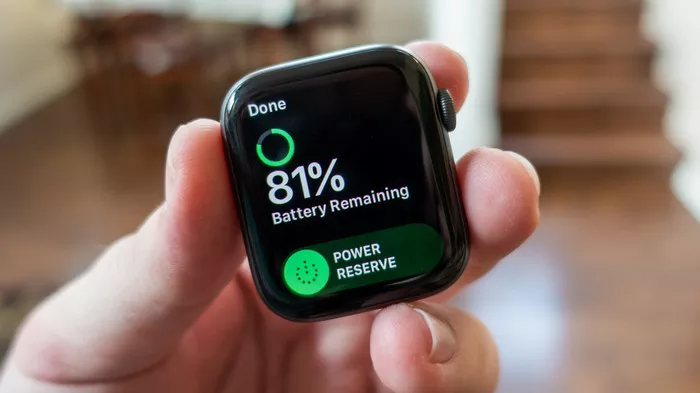In the dynamic realm of wearable technology, the Apple Watch Series 4 has emerged as an epitome of innovation, seamlessly fusing style, functionality, and cutting-edge features into a compact and sophisticated timepiece. Among the critical considerations for users, the longevity of the device’s battery life takes center stage. In this comprehensive exploration, we dive deep into the question that resonates with every Apple Watch wearer: How long does the Apple Watch Series 4 battery last? From everyday scenarios to fitness tracking and beyond, we unravel the intricacies of the Series 4’s battery performance, providing users with a comprehensive understanding of what to expect from this technological marvel.
The Evolution of Smartwatch Battery Life: Balancing Act in a Compact Form Factor
Before delving into the specifics of the Apple Watch Series 4, it’s essential to contextualize the evolution of smartwatch battery life. As these compact devices evolved from mere timekeeping accessories to multifunctional wearables, manufacturers faced the challenge of balancing performance with the constraints of size and form factor. The pursuit of longer battery life has been a constant endeavor, with each generation of smartwatches aiming to strike a harmonious balance between features, usability, and the need for extended usage without frequent recharging.
Key Factors Influencing Battery Life:
Feature Set:
The inclusion of advanced features, such as heart rate monitoring, GPS tracking, and always-on displays, can impact battery life.
Display Technology:
The type of display used, whether OLED or LTPO and the brightness settings contribute significantly to how much power the screen consumes.
Connectivity:
The use of features like cellular connectivity and frequent data syncing can have implications for battery longevity.
Usage Patterns:
Individual usage patterns, including app usage, notifications, and workout tracking, play a crucial role in determining how quickly the battery is depleted.
Demystifying the Apple Watch Series 4 Battery Life: A Day in the Life of Your Wrist
The Apple Watch Series 4, renowned for its sleek design and an array of features, offers users a balance of performance and battery efficiency. Understanding the factors influencing battery life is paramount for users seeking an optimal experience.
Official Apple Specifications:
Up to 18 Hours of Battery Life:
According to Apple’s official specifications, the Series 4 is designed to deliver up to 18 hours of battery life on a single charge.
All-Day Usage:
The term “all-day battery life” is a benchmark set by Apple, accounting for a mix of active and passive usage throughout the day.
Mixed Usage Scenarios:
Apple’s calculations for battery life encompass a variety of activities, including checking the time, receiving notifications, tracking workouts, and using apps.
Factors Impacting Battery Drain: Navigating the Power-Hungry Features
While the Series 4 boasts impressive battery life, certain features and usage patterns can contribute to faster battery drain. Understanding these factors allows users to make informed decisions to optimize battery performance.
Power-Hungry Features:
Always-On Display:
If enabled, the always-on display feature can impact battery life, as the screen remains partially lit even when not actively in use.
Workout Tracking:
Engaging in GPS-enabled workouts or continuous heart rate monitoring during extended sessions can contribute to increased power consumption.
App Usage:
Intensive use of third-party apps, particularly those that require frequent updates or use GPS functionality, can contribute to faster battery drain.
Background Processes:
Features like background app refresh, constant notifications, and background processes contribute to overall power consumption.
Optimizing Battery Life: Tips for Prolonged Usage
For users keen on maximizing their Apple Watch Series 4 battery life, adopting certain practices can contribute to prolonged usage between charges.
Battery Optimization Tips:
Adjust Display Settings:
Modifying the display settings, including brightness and disabling the always-on display, can have a notable impact on battery life.
Manage Notifications:
Customizing notification settings to reduce unnecessary alerts can minimize background activity and preserve battery power.
Use Power Reserve Mode Sparingly:
Activating Power Reserve mode conservatively can extend the device’s usage when the battery is critically low.
Regular Software Updates:
Keeping the Apple Watch’s software up to date ensures that it benefits from optimizations and enhancements that contribute to improved efficiency.
Conclusion: Striking the Right Balance in Wearable Performance
In conclusion, the Apple Watch Series 4 stands as a testament to the delicate balance between performance and battery efficiency in the realm of wearables. With up to 18 hours of battery life, users can confidently navigate a day filled with diverse activities, from tracking fitness milestones to staying connected with notifications.
As technology continues to advance, future iterations of smartwatches will likely witness further refinements in battery life, driven by advancements in power management and efficiency. In the present landscape, the Apple Watch Series 4 represents a sophisticated fusion of style, functionality, and endurance, offering users an immersive and reliable experience on their wrists.
Whether you’re a fitness enthusiast, a professional on the go, or someone who values the seamless integration of technology into daily life, the Series 4’s battery longevity ensures that your wearable companion remains by your side, keeping pace with the demands of modern living.

